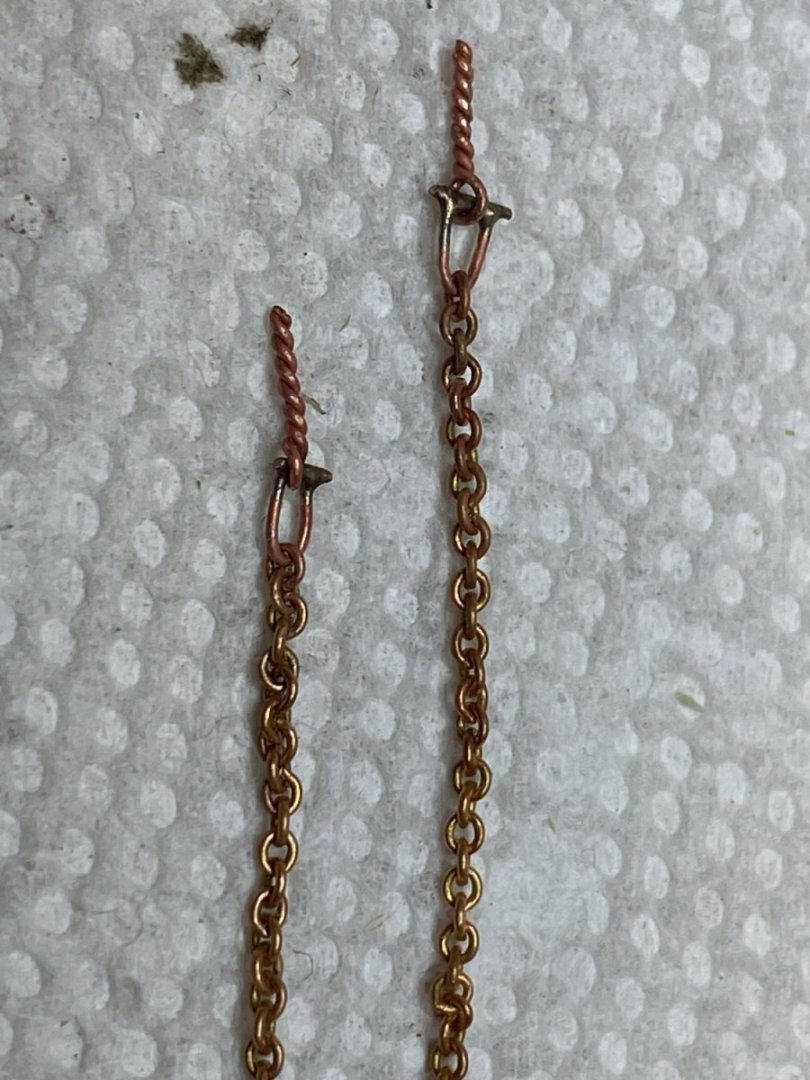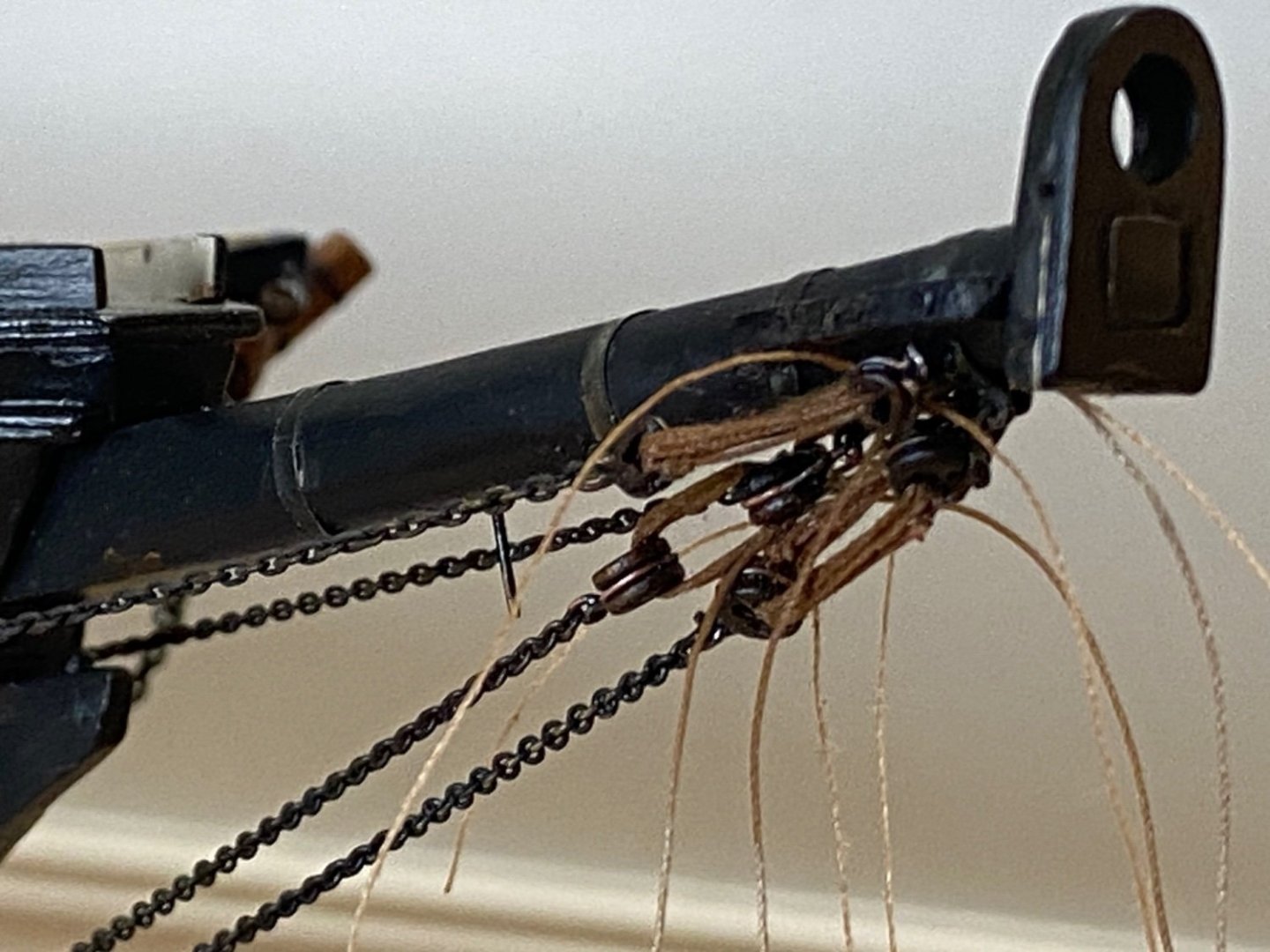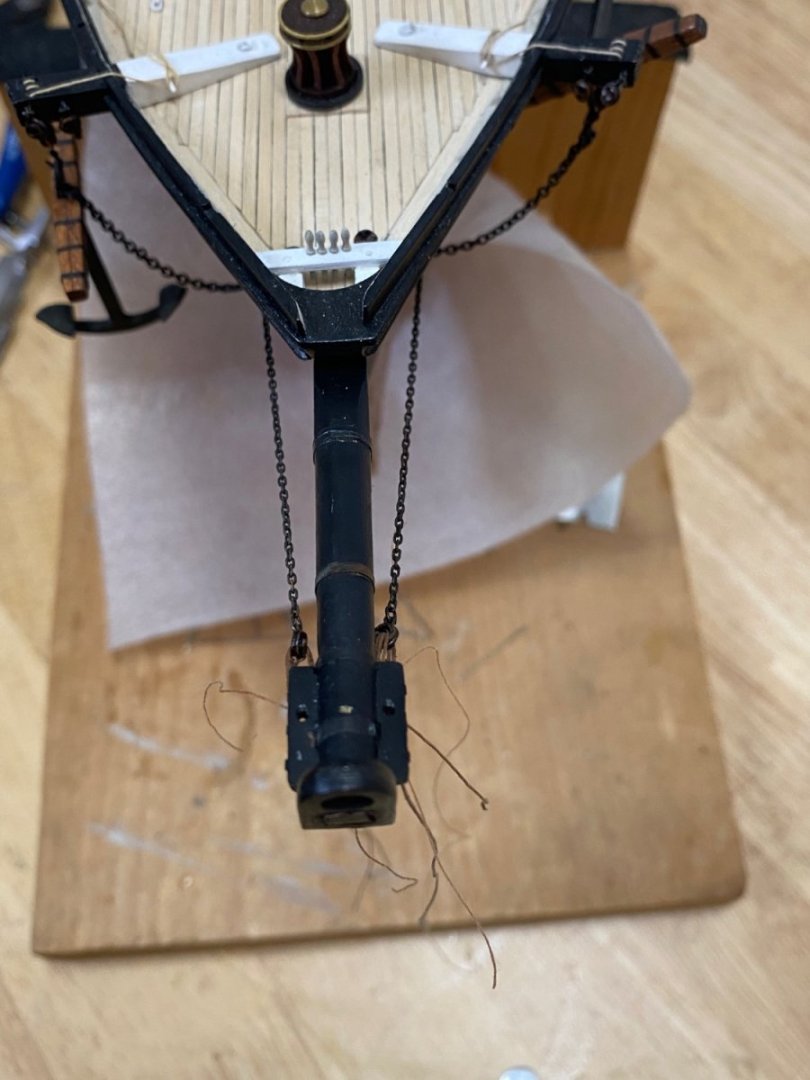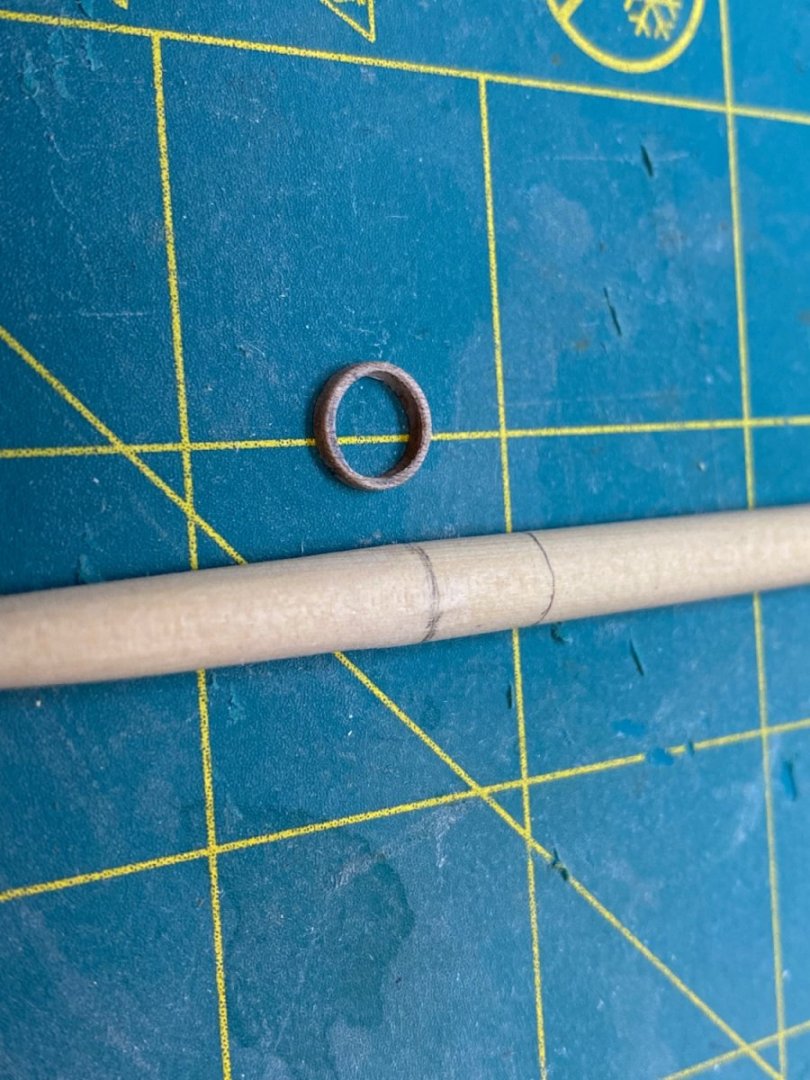
Rick310
NRG Member-
Posts
793 -
Joined
-
Last visited
Content Type
Profiles
Forums
Gallery
Events
Everything posted by Rick310
-
Beautiful model and a great blog!! truly enjoyed following along! Rick
- 330 replies
-
Thanks Rob for your input. I agree with you and I intend to place bands on the Mizzen Rick
- 3,618 replies
-
- young america
- clipper
-
(and 1 more)
Tagged with:
-
Thanks EdT and Rob for your input. I’m leaning towards placing bands on the Mizzen per both the China trade painting and the Buttersworth painting. What is the likelihood that both artists would include bands if they were not there? Thanks EdT for your thoughts that bands on a single tree mizzen would contribute to its strength. That was my thought also. Rick
- 3,618 replies
-
- young america
- clipper
-
(and 1 more)
Tagged with:
-
John, Sending best wishes for a full recovery. Certainly understand the frustration when results don’t match expectations. Just keep moving forward and be patient. Redo things any time you think can do better and accept that some things are as good as you can do. As George says, we are much harder on ourselves, no body will see the mistakes that we see. I have found that with time, I like my results betters than when I first made something as nothing ever seem to match my expectations. Look forward to you getting back to the Fish . Rick
- 34 replies
-
- Flying Fish
- Model Shipways
-
(and 1 more)
Tagged with:
-
Very nicely done really enjoyed following your journey!! Rick
- 330 replies
-
Truly magnificent!! I had a heck of a time tying off the lanyards on the bowsprit rigging at 1/8 inch scale. I can’t imagine how you accomplished that at an even smaller scale! Very impressive, all of it!! Rick
-
Thanks George, It’s been a long time coming! Rick
- 350 replies
-
- Flying Fish
- Model Shipways
-
(and 1 more)
Tagged with:
-
Finally got the bowsprit rigged with hearts and chain. I modified deadeyes for the hearts and used 27 and 30 links per inch chain for the bobstays and shrouds. The 30 lpi chain was brass and used for the bobstays. The 27 lpi chains were used for the bowsprit shrouds. This chain was copper and the diameter of the wire is smaller than the brass chain. The 30 lpi brass chain looks larger than the 27 lpi copper chain so I used it for the bobstays and the copper 27 lpi for the shrouds. I initially rigged the bobstays with .018 tan line from Syren, darken with Ipswich pine stain, which is the correct size but looked too big and bulky on the model so I replaced it with.012 line which looks better (to me). I found it a real challenge to get the lanyards secured while keeping the chain tight and keeping visible knots to a minimum (a couple of solder joints fractured and had to be resoldered). These were done multiple times before I was satisfied with the result. And finally, after many years, the figurehead was permanently attached. Started stropping blocks that will be shackled to eyebolts on the deck as I study the rigging plans in preparation for masting and rigging. I’m going to try to make faux shackles for most of the blocks if possible. Turned and shaped the mizzen out of Alaskan cedar and the mast coat out of cherry. Currently waiting on dry transfer lettering for the bow and stern from Bluejacket.
- 350 replies
-
- Flying Fish
- Model Shipways
-
(and 1 more)
Tagged with:
-
Ed, On the YA, was the he mizzen mast a single tree or was it a made mast on your model? If a single tree, why the decision to place mast bands? I seem to recall that I read somewhere that bands were place on single tree mast for strength. I am currently building the Flying Fish and it supposedly had a single tree mast and the plans show no bands on the mizzen. However, 2 contemporary paintings ( Buttersworth and China Trade) show bands on the mizzen. what to do? Rick
- 3,618 replies
-
- young america
- clipper
-
(and 1 more)
Tagged with:
About us
Modelshipworld - Advancing Ship Modeling through Research
SSL Secured
Your security is important for us so this Website is SSL-Secured
NRG Mailing Address
Nautical Research Guild
237 South Lincoln Street
Westmont IL, 60559-1917
Model Ship World ® and the MSW logo are Registered Trademarks, and belong to the Nautical Research Guild (United States Patent and Trademark Office: No. 6,929,264 & No. 6,929,274, registered Dec. 20, 2022)
Helpful Links
About the NRG
If you enjoy building ship models that are historically accurate as well as beautiful, then The Nautical Research Guild (NRG) is just right for you.
The Guild is a non-profit educational organization whose mission is to “Advance Ship Modeling Through Research”. We provide support to our members in their efforts to raise the quality of their model ships.
The Nautical Research Guild has published our world-renowned quarterly magazine, The Nautical Research Journal, since 1955. The pages of the Journal are full of articles by accomplished ship modelers who show you how they create those exquisite details on their models, and by maritime historians who show you the correct details to build. The Journal is available in both print and digital editions. Go to the NRG web site (www.thenrg.org) to download a complimentary digital copy of the Journal. The NRG also publishes plan sets, books and compilations of back issues of the Journal and the former Ships in Scale and Model Ship Builder magazines.






















